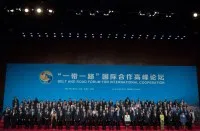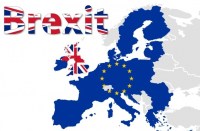Prior to his meeting with the President of the European Commission Jean-Claude Juncker, Donald Trump made Europe an offer it is almost certain to refuse - one of total free trade. Trump Tweeted,
“The European Union is coming to Washington tomorrow to negotiate a deal on Trade. I have an idea for them. Both the U.S. and the E.U. drop all Tariffs, Barriers and Subsidies! That would finally be called Free Market and Fair Trade! Hope they do it, we are ready - but they won’t!”
The European Union is coming to Washington tomorrow to negotiate a deal on Trade. I have an idea for them. Both the U.S. and the E.U. drop all Tariffs, Barriers and Subsidies! That would finally be called Free Market and Fair Trade! Hope they do it, we are ready - but they won’t!
— Donald J. Trump (@realDonaldTrump) July 25, 2018
In issuing such a Tweet, Donald Trump has exposed that while he speaks the language of protectionism and the European Union speaks the language of free trade - in reality, it is Brussels that has been embracing pseudo-protectionist measures long before anyone thought that Donald Trump would be the President of the United States.
While the EU has created a single market and customs union among its own members, the EU tends to function as an economic ‘fortress Europe’ wherein genuine free trade agreements are difficult to secure and when they are secured, they are usually with countries whose economies are so qualitatively similar that the deals do not make a substantial difference to either side.
I detailed this phenomenon of free trade guided by caution rather than a lust for creating opportunities after the recent singing of a long awaited EU-Japan free trading agreement:
“While the deal is clearly a step in the right direction both for Japan and Europe, the deal falls far short of the potential inherent in a would-be China-EU trade deal of a similar nature. One of the peculiar points of common approaches to free trade, particularly where Europe is concerned is that EU leaders are traditionally more keen on developing free trading relations with economies that are similar to those in Europe. This has the effect of creating documents which appear to very much embrace free trade but which in reality do not significantly change realities for either trading partner.
This is the case because economies who excel at making similar goods for roughly similar prices and whose domestic purchasing power is roughly the same, tend to balance each other out rather than leading to new and novel opportunities in the context of a free trading agreement. At the end of the day, Toyotas and Volkswagens are not drastically different in the year 2018, neither in terms of quality nor price. While the new agreement will help to reduce EU tariffs on Japanese cars over time while allowing more European agricultural goods into the Japanese market, it is not entirely clear if there is enough demand on either side for the deal to make a significant difference to either economy. In this sense, such cautious free trade deals are in many respects the more attractive cousin of protectionism.
By contrast, the Chinese and EU economies are incredibly diverse when compared with one another. Because of this, both sides stand to gain in the win-win formula if the EU were to open its markets to China in the way that it just has with Japan. The inverse is equally true of China where markets are already opening up to the entire world, including Europe.
At a time when inflation is retarding living standards across much of the EU, effective and fairly priced Chinese industrial goods could help to elevate living standards throughout the EU. Likewise, if China and Europe were able to intensify cooperation in hi-tech innovation, pharmaceuticals, transport infrastructure, aviation and scientific research, it would help both sides to learn from one another at a time when China is accelerating development in its research and development sectors while Europe’s remain globally strong but partly stagnant. As many of China’s high-speed trains are now superior to those pioneered in Europe and Japan, China could be an important partner for nations looking to stay ahead of the curve in this crucial sector. Finally, China’s large and increasingly affluent domestic market is already a prime market for luxury European goods ranging from luxury cars to haute couture and unique agricultural products including fine wines and meats. A freer trading arrangement could therefore be a huge benefit to European producers”.
But it is not just the pursuit of cautious rather than dynamic trade deals where European policy makers tend to fall short of their rhetoric regarding free trade. The EU remains a closed market to many goods throughout the phenomenon known as ‘non-tariff barriers to trade‘. These include prohibitions on certain products that do not conform to the rigid standards of domestically produced EU goods, even though most of the would-be imports are perfectly safe and used on a frequent basis in wealthy economies ranging from China to the United States. The imposition of import quotas on a range of goods is another EU method of creating tariffs through the backdoor as is the notorious red tape involving EU import licences. Likewise, the EU’s imposition of high value added tax on most imports is essentially a mini-tariff in and of itself.
Even going back to 2011, complaints were made to the World Trade Organisation (WTO) about how the EU’s trade practices with non-member states are incredibly restrictive. Little has changed since then. In this sense, while Trump both walks the walk and talks the talk on old fashioned protectionism, the EU is stuck in a rut between the modern rhetoric of free trade and the parochial values of protectionism.
In this sense, Trump has called the European Union’s bluff in a profound way and Jean-Claude Junker will ultimately have little to show for it as the EU is known for clinging on to its prohibitive trade policies even when global trends point in the direction of genuine openness.
Of course, few countries operate on the basis of full free trade with a foreign bloc or nation, but the EU is a special case as it offers potential partners an inaccurate picture of what trading with the EU is actually like. At a time when China is working to genuinely and effectively open up its markets at historic levels, the EU remains stuck in its old ways. Donald Trump has helped to expose this by challenging Brussels to create policies that match its rhetoric. It is unlikely that this will happen - again, just as Trump accurately predicted.



